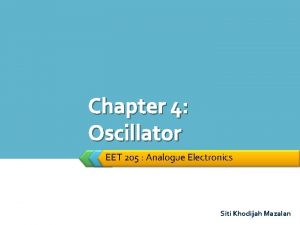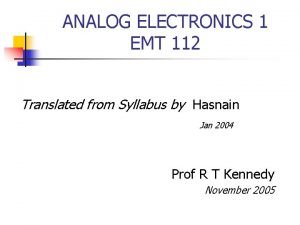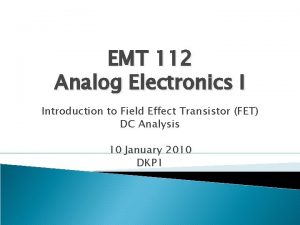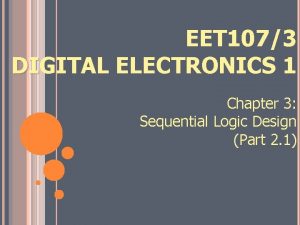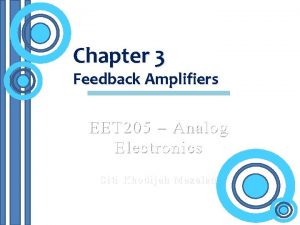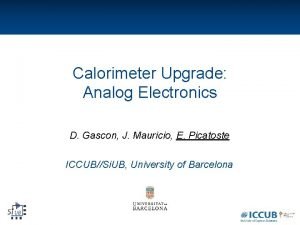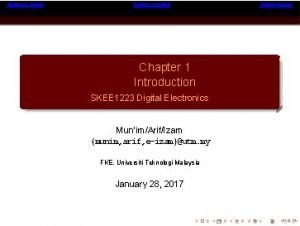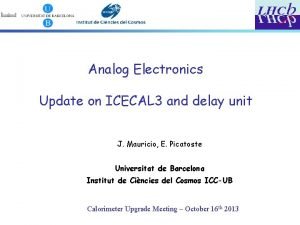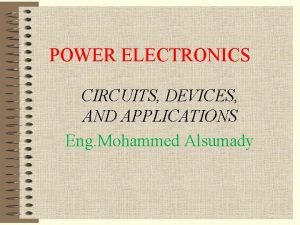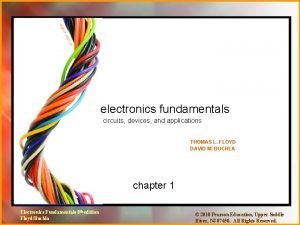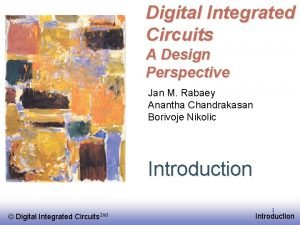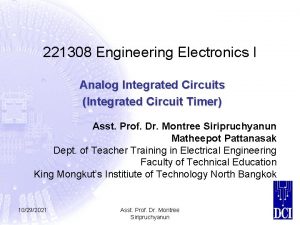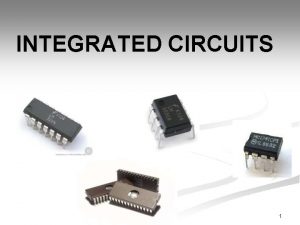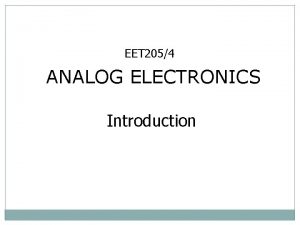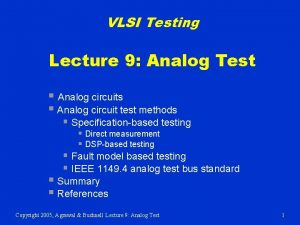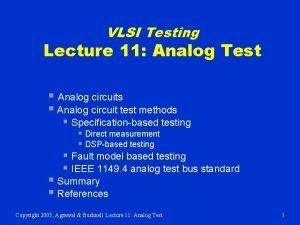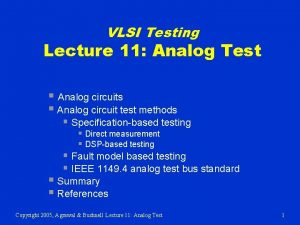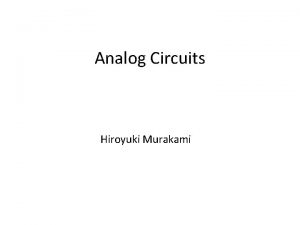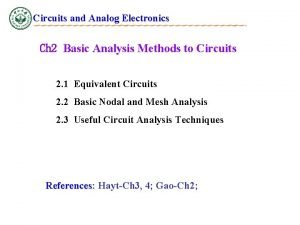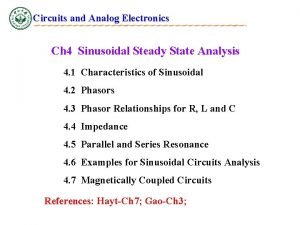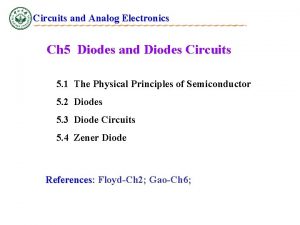221308 Engineering Electronics I Analog Integrated Circuits Integrated


















- Slides: 18

221308 Engineering Electronics I Analog Integrated Circuits (Integrated Circuit Timer) Asst. Prof. Dr. Montree Siripruchyanun Matheepot Pattanasak Dept. of Teacher Training in Electrical Engineering Faculty of Technical Education King Mongkut’s Institiute of Technology North Bangkok 2/28/2021 Asst. Prof. Dr. Montree Siripruchyanun 1

The Capacitor Ø Ø The capacitor is a device that stores electric charge Rislove’s Rules of Capacitors (DC Circuits) 1) 2) 3) 4) 5) When voltage is applied, capacitors will briefly allow current to flow as they charge Voltage across a capacitor increases as it charges Once charged, capacitors no longer allow current to flow and the voltage across the capacitor is constant Capacitors with large capacitance (measured in Farads) take longer to charge Capacitors can be discharged by short-circuiting them 2/28/2021 Asst. Prof. Dr. Montree Siripruchyanun 2

Charging and Discharging Ø Voltage across a capacitor increases as it charges Ø Large resistor + large capacitor = longer charging time 2/28/2021 Asst. Prof. Dr. Montree Siripruchyanun 3

The RC Time Constant Ø The time it takes for a capacitor to charge or discharge depends on two things: • How much current is flowing (limited by the resistor R) • How much charge the capacitor can store (limited by the capacitance C) Ø R x C is called the time constant and determines the charging time 2/28/2021 Asst. Prof. Dr. Montree Siripruchyanun 4

Capacitors as Backup Power Ø Very large capacitors (a few Farads capacitance) can be connected between VCC and Ground near the power supply Ø If the power fails, the capacitor can supply current to the circuits for up to a few hours at a time 2/28/2021 Asst. Prof. Dr. Montree Siripruchyanun 5

Capacitors in Digital Circuits Ø 99% of capacitors in digital circuits connect VCC to ground near a chip in order to cut down on noise Ø The rest do one of the following: • Provide backup power • Provide external capacitors for the clock circuit (known as an astable multivibrator) 2/28/2021 Asst. Prof. Dr. Montree Siripruchyanun 6

Mutivibrators Ø A multivibrator is a circuit that changes its output between two states continuously or on demand Ø Three types: • Bistable multivibrators (i. e. flip-flops) • Monostable multivibrators produce a single pulse once triggered by an input signal • Astable multivibrators produce an oscillating train of ones and zeroes spontaneously 2/28/2021 Asst. Prof. Dr. Montree Siripruchyanun 7

Monostable Multivibrators Ø Principal use: to adjust the duty cycle of a pulse train Ø Feel free to read more in your text —enough said 2/28/2021 Asst. Prof. Dr. Montree Siripruchyanun 8

Astable Multivibrators Ø An astable multivibrator is inherently unstable, switching constantly between HIGH and LOW Ø Astable multivibrators are used principally to generate clock signals in digital circuits 2/28/2021 Asst. Prof. Dr. Montree Siripruchyanun 9

A Simple Astable Multivibrator Ø The input (and output) constantly switches from HIGH to LOW as the capacitor is charged and discharged Ø Uses feedback to make the circuit unstable 2/28/2021 Asst. Prof. Dr. Montree Siripruchyanun 10

Timing Diagram 2/28/2021 Asst. Prof. Dr. Montree Siripruchyanun 11

555 Timer 2/28/2021 Asst. Prof. Dr. Montree Siripruchyanun 12

The 555 Timing IC Note: A comparator outputs a HIGH when the + input is at a higher voltage than the input 2/28/2021 Asst. Prof. Dr. Montree Siripruchyanun 13

The 555 as an Astable Multivibrator Ø The discharging time constant is RBC Ø The charging time constant is (RA+RB)C Ø In this case, the circuit takes longer to charge than to discharge A small (~0. 01 u. F) capacitor should be placed on pin 5 2/28/2021 Asst. Prof. Dr. Montree Siripruchyanun 14

Timing Diagram Ø t. LO = 0. 693 RBC Ø t. HI = 0. 693(RA+RB)C Ø The output frequency is f = 1/(t. LO+t. HI) 2/28/2021 Asst. Prof. Dr. Montree Siripruchyanun 15

A 50% Duty Cycle Clock Ø For a 50% duty cycle clock, the charge and discharge RC time constants must be the same Ø The circuit charges through RA and discharges through RB = RA 2/28/2021 The output frequency is f = 1/(2 x 0. 693 x. RAC) Asst. Prof. Dr. Montree Siripruchyanun 16

Monostable Multivibrator 2/28/2021 Asst. Prof. Dr. Montree Siripruchyanun 17

Monostable Multivibrator 2/28/2021 Asst. Prof. Dr. Montree Siripruchyanun 18
 Digital vs analog video
Digital vs analog video Oscillator analog electronics
Oscillator analog electronics Emt 112
Emt 112 Frequency response cbe
Frequency response cbe Analog electronics
Analog electronics Analog electronics
Analog electronics 3 bit up down counter using t flip flop
3 bit up down counter using t flip flop Analog electronics
Analog electronics Analog electronics
Analog electronics Eet 205
Eet 205 Analog electronics
Analog electronics Introduction to analog and digital electronics
Introduction to analog and digital electronics Icecal
Icecal Power electronics circuits devices and applications
Power electronics circuits devices and applications Electronics fundamentals circuits devices and applications
Electronics fundamentals circuits devices and applications Series parallel circuit current
Series parallel circuit current Wmdx
Wmdx Digital integrated circuits: a design perspective
Digital integrated circuits: a design perspective Digital integrated circuits: a design perspective
Digital integrated circuits: a design perspective

